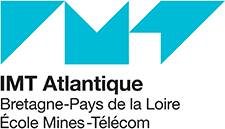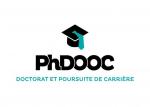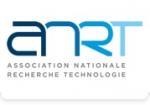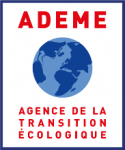Longitudinal Detection of Contributor Teams in Wikipedia - Clustering Algorithms in Temporal Graphs
| ABG-133694 | Master internship | 6 months | 650 |
| 2025-10-06 |

- Data science (storage, security, measurement, analysis)
- Computer science
Employer organisation
The Lab-STICC, with it affiliation to the INS2I institute of the CNRS, is a research unit historically recognized in Brittany and in France in the field of ICTS. It has a proven capacity to cover a broad scientific spectrum around digital sciences, and in particular with this ability to address various disciplinary fields (Information Theory, Waves & Materials, Embedded Electronics and Computing, Data Sciences, Communication and Signal Detection, Human-Machine Interfaces,...) following multiple themes/application sectors: maritime environment, communicating objects, defense, space, health, security, robotics...
The Lab-STICC's motto "From sensors to knowledge: communicating and deciding" initially underlined the intention to give "meaning" to the "sign", in terms of interpretations and increased value with respect to treatments based on a signal in all its forms. Today, this motto is even more reinforced by the importance of data, which is becoming the vector of technological and scientific innovation, undeniably boosted by the major advances in science in the field of cognition and artificial intelligence. The ability of the Lab-STICC to establish this link between the lower and upper layers (up to Human-Complex Systems cooperation) is an asset to mobilize its scientific strengths, and federate research around the societal challenges such as digital, environment, energy. The laboratory has been restructured around 9 research departments, bringing together 26 teams. It is indeed an architecture based on disciplinary competences - the teams - working in a coordinated way within poles following shared scientific ambitions - and able to articulate in a transversal way around the societal and scientific challenges.
Description
This Master 2 internship aims to develop and evaluate algorithms for longitudinal detection of contributor teams on Wikipedia. The challenge is twofold: on the technical level, it involves designing temporal graph clustering methods capable of tracking the coherent evolution of communities over time; on the application level, these methods must enable analysis of collaborative dynamics on Wikipedia by integrating organizational metrics from management science.
Wikipedia, with over 50 active language versions and millions of contributors, constitutes a privileged observation field for understanding how contributor teams form, evolve, and coordinate within editorial projects. The algorithms will be evaluated on academic benchmarks and then applied to real Wikipedia projects to characterize the formation, evolution, and dissolution of editorial teams.
The internship will focus on implementing and evaluating the Spatio-Temporal Graph Laplacian algorithm, comparing it to baseline methods, and characterizing detected communities using organizational metrics (internal cohesion, collective viability, collaborative effectiveness, core-periphery structure). An essential objective is producing a scientific article for an international conference and releasing all developed code as open source.
This internship is part of the PEPR eNSEMBLE - CONGRATS project (COllectives for kNowledge pRoduction mAnagement That Scale).
Full description of the offer: https://kdrive.infomaniak.com/app/share/396506/f77f1efd-2add-4966-81c3-575827184b43
Profile
We are seeking a Master 2 Research student with the following skills:
- Graph algorithmics
- Proficiency in Python (NetworkX, SciPy, pandas)
- Autonomy and organizational capacity
Starting date
Vous avez déjà un compte ?
Nouvel utilisateur ?
Get ABG’s monthly newsletters including news, job offers, grants & fellowships and a selection of relevant events…
Discover our members
 Tecknowmetrix
Tecknowmetrix  PhDOOC
PhDOOC  Laboratoire National de Métrologie et d'Essais - LNE
Laboratoire National de Métrologie et d'Essais - LNE  MabDesign
MabDesign  ONERA - The French Aerospace Lab
ONERA - The French Aerospace Lab  Ifremer
Ifremer  Groupe AFNOR - Association française de normalisation
Groupe AFNOR - Association française de normalisation  Aérocentre, Pôle d'excellence régional
Aérocentre, Pôle d'excellence régional  Institut Sup'biotech de Paris
Institut Sup'biotech de Paris  ANRT
ANRT  Nokia Bell Labs France
Nokia Bell Labs France  MabDesign
MabDesign  ADEME
ADEME  ASNR - Autorité de sûreté nucléaire et de radioprotection - Siège
ASNR - Autorité de sûreté nucléaire et de radioprotection - Siège  CASDEN
CASDEN  Généthon
Généthon  SUEZ
SUEZ  CESI
CESI  TotalEnergies
TotalEnergies
